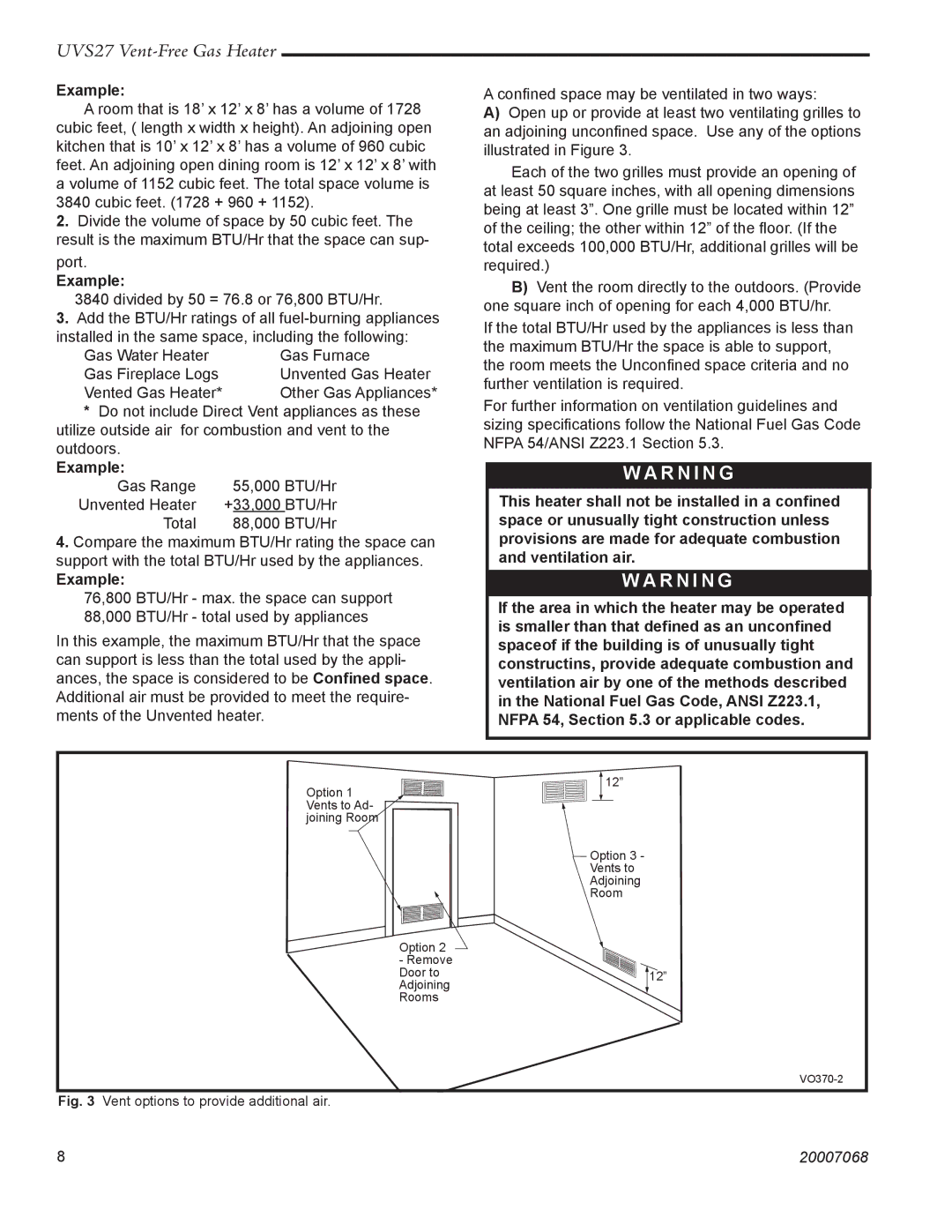4085 - 4087, 4030 - 4036, 4090 - 4092, 4040 - 4046 specifications
Vermont Casting gas fireplaces are renowned for their high-quality construction and elegant designs, making them popular choices among homeowners seeking both functionality and aesthetic appeal. The models 4030, 4036, 4040, 4046, 4085, 4087, 4090, and 4092 represent a range of offerings that showcase the brand’s commitment to craftsmanship and innovation.The Vermont Casting 4030 and 4036 models are characterized by their compact size and traditional styling, making them a great fit for smaller spaces. Both models employ advanced gas-burning technologies, ensuring efficient heat output and reduced emissions. The clean line design enhances any interior, while the expansive glass door allows for a clear view of the flames, adding to the ambiance of the room.
The 4040 and 4046 models expand upon this foundation, catering to larger spaces without sacrificing efficiency. These fireplaces can be fitted with either natural gas or propane, providing flexibility based on the homeowner’s preferences. The 4046, with its increased BTU output, is particularly effective in heating larger areas, making it a reliable choice during colder months.
Moving on to the 4085 and 4087 models, they are designed with larger viewing areas and a modern aesthetic, which appeals to contemporary tastes. These models also incorporate Vermont Castings' Clean Burn technology, which maximizes heat generation while minimizing pollutants released into the air. This technology makes the 4085 and 4087 environmentally friendly choices for conscientious consumers.
Finally, the 4090 and 4092 models take versatility to another level, offering distinctive designs that can complement various decor styles. Both come equipped with customizable options, including different finishes and decorative fronts, allowing homeowners to tailor their fireplace to match their preferences. The inclusion of advanced electronic ignition systems makes these models user-friendly, ensuring a hassle-free experience when lighting and operating the fireplace.
In conclusion, the Vermont Casting fireplace models 4030, 4036, 4040, 4046, 4085, 4087, 4090, and 4092 exemplify a blend of tradition, innovation, and customization. Their features promote efficient heating and aesthetic appeal, making them desirable options for any home environment. Whether for cozy evenings or entertaining guests, these fireplaces promise to enhance the warmth and charm of any space.

